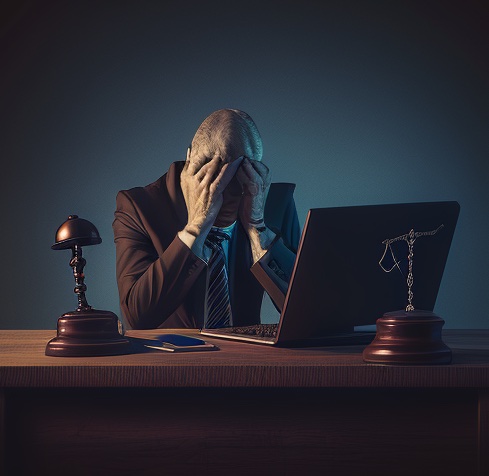 The question of whether a CEO should be criminally liable for ignoring cybersecurity is a complex and controversial issue.
The question of whether a CEO should be criminally liable for ignoring cybersecurity is a complex and controversial issue.
On one hand, the CEO is ultimately responsible for the overall security of an organization and should take all necessary measures to protect sensitive information and assets. If a CEO fails to prioritize cybersecurity and a breach occurs as a result, it could have serious consequences for the organization, its customers, and potentially even the wider community. In such cases, holding the CEO criminally liable may serve as a deterrent and encourage them to take cybersecurity more seriously.
On the other hand, the criminal liability of a CEO for a cybersecurity breach raises some challenges. For example, it may be difficult to determine the exact cause of a breach and determine whether it was the result of a failure to prioritize cybersecurity or other factors such as underfunding, inadequate resources, or human error. In addition, many organizations operate in complex, fast-paced environments and are facing constantly evolving threats. It may be unrealistic to hold the CEO strictly liable for all cybersecurity incidents.
In conclusion, the issue of criminal liability for CEO’s ignoring cybersecurity is a complex and nuanced one that requires careful consideration of the potential benefits and drawbacks. Ultimately, the level of liability for a CEO will depend on the specific circumstances of each case and the laws and regulations that apply.
The penalties for a CEO when gross negligence is demonstrated in regards to cybersecurity can vary depending on the jurisdiction and the specific laws and regulations that apply. Some possible penalties include:
- Fines: The CEO may be fined a significant amount of money as a result of their gross negligence. The amount of the fine will typically depend on the severity of the breach and the potential harm caused to the organization and its customers.
- Civil lawsuits: The CEO may face civil lawsuits from customers, shareholders, or other parties who have been negatively affected by the breach.
- Loss of employment: In some cases, the CEO may lose their job as a result of gross negligence in regards to cybersecurity. This may happen if the breach causes significant harm to the organization or its reputation.
- Criminal charges: In some circumstances, the CEO may face criminal charges, such as charges of fraud or mismanagement, if their gross negligence has caused significant harm to the organization or its customers.
- Restitution: The CEO may be ordered to pay restitution to the organization or its customers for any losses or damages resulting from the breach.
It’s important to note that the specific penalties for a CEO who demonstrates gross negligence in regards to cybersecurity will depend on the jurisdiction and the circumstances of each case. The laws and regulations that apply will determine the extent of the CEO’s liability and the penalties that may be imposed.
A lawyer handling the liabilities of a CEO in regards to cyber-ransomware should take the following steps to expose the truth or coverups:
- Conduct a thorough investigation: The lawyer should conduct a thorough investigation into the CEO’s actions and responsibilities in regards to cybersecurity. This may involve reviewing internal records, interviewing relevant employees, and consulting with experts in the field.
- Review relevant laws and regulations: The lawyer should be familiar with the relevant laws and regulations that apply to cybersecurity and the responsibilities of a CEO in this area. This will help to determine the extent of the CEO’s liability and any potential penalties that may be imposed.
- Determine the cause of the breach: The lawyer should work to determine the cause of the breach and whether the CEO’s gross negligence was a contributing factor. This may involve reviewing the organization’s cybersecurity policies and procedures and identifying any areas where the CEO failed to take adequate measures to protect sensitive information and assets.
- Gather evidence: The lawyer should gather evidence to support their case, such as emails, internal documents, and any other relevant information that may demonstrate the CEO’s negligence or misconduct.
- Negotiate a settlement: If appropriate, the lawyer may negotiate a settlement with the relevant parties to resolve the matter. This may involve compensating any victims of the breach or taking steps to improve the organization’s cybersecurity measures.
- Represent the CEO in court: If necessary, the lawyer should be prepared to represent the CEO in court and present their case in front of a judge or jury.
Ultimately, the goal of the lawyer should be to help the CEO understand their responsibilities in regards to cybersecurity, to expose the truth about the breach and any potential negligence, and to help resolve the matter in a way that is in the best interest of all parties involved.

